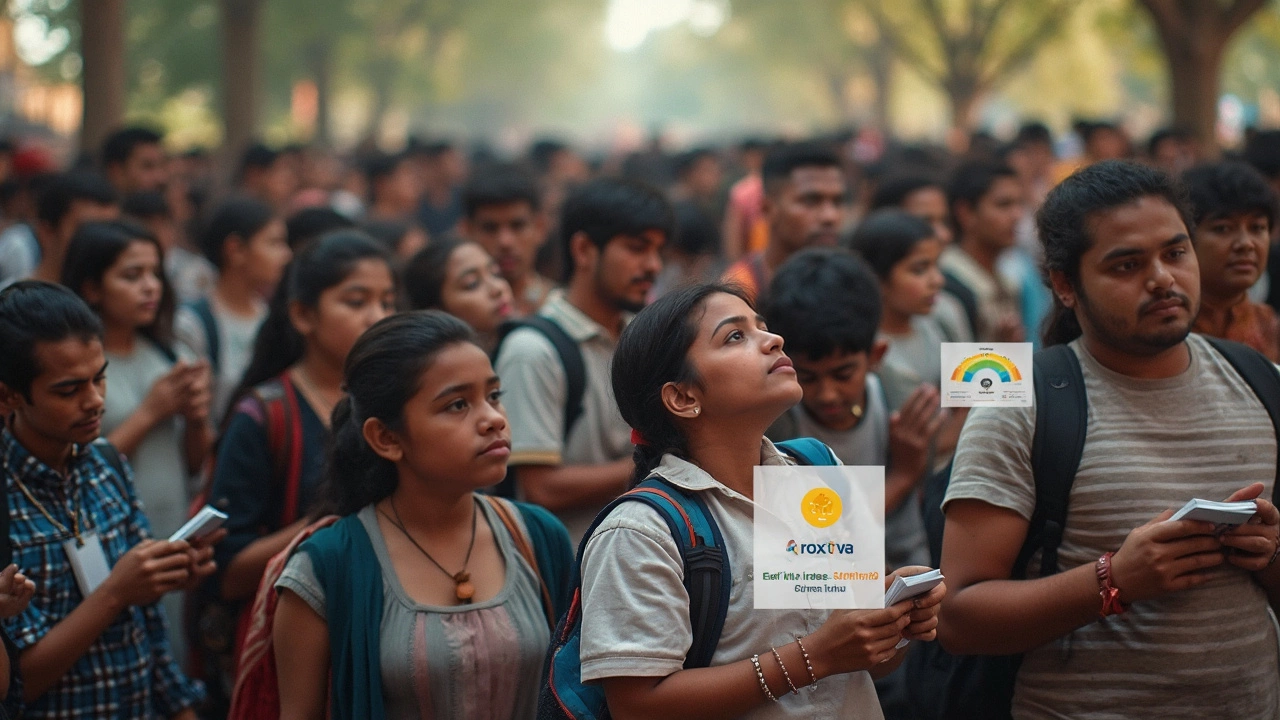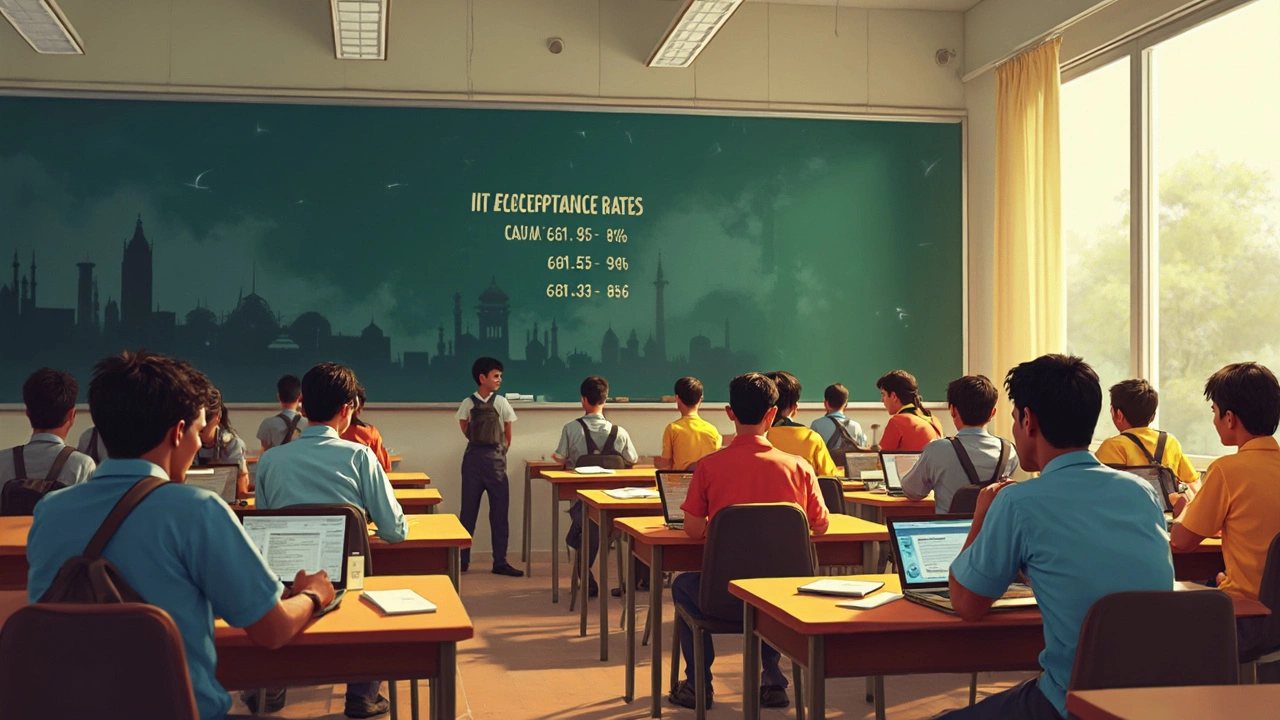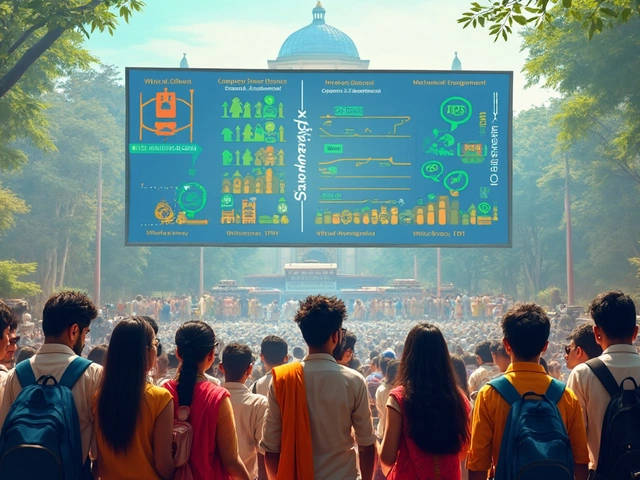Thousands of students crack the JEE Advanced every year, but nabbing a spot at the most coveted IITs? That’s a different league. The question pops up every single year: which IIT is the absolute hardest to get into? It’s not just about the lowest rank or the best campus—there’s some real data behind the hype.
But here’s the twist: each IIT has its own quirks, and the difficulty level goes way beyond the big names. You’ll see cutoffs for Computer Science in IIT Bombay and Delhi hit the stratosphere, while some older IITs quietly get tougher for specific branches or categories. And while getting into IIT Bombay often feels like unlocking a cheat code, the story’s a bit more nuanced when you peek at the latest seat matrices, student choices, and what actually turns candidates on or off from a campus.
If you’re eyeing one of these elite spots, knowing what actually drives competition at these IITs isn’t just interesting—it could shape your prep strategy in a major way. So let’s cut through the noise and see what makes one IIT climb above the rest when it comes to pure difficulty.
- How IIT Admissions Actually Work
- IIT Bombay vs. Delhi: Race for the Top Spot
- Cutoff Trends and What They Mean
- Student Preferences: It’s Not All About Ranking
- Seat Matrix and Branch Popularity
- Tips if You’re Shooting for the Toughest IIT
How IIT Admissions Actually Work
The whole IIT admission process is a bit of a marathon, not just a single jump. It’s not only about topping the JEE Main and Advanced—there’s a lot more happening behind the scenes.
First, to even be eligible for IITs, you need to clear JEE Main. That’s step one. If you make the cut, you get a shot at JEE Advanced. Every year, about 2 lakh students qualify for Advanced, but only a tiny fraction actually get into any IIT, let alone the best ones.
After you’ve survived Advanced, there’s the Joint Seat Allocation Authority (JoSAA) counseling. This is where things get real. Based on your AIR (All India Rank), category, and course preferences, JoSAA runs several rounds of allotment. They match your choices with available seats, and you get admitted only if your rank fits the cutoff for that specific course and IIT.
- Admissions are strictly by rank, no interviews or GDs like management colleges.
- The cutoff for each branch and IIT changes yearly, based on how many people want it and how they performed that year.
- Seats are limited. For example, in 2024, there were only about 16,234 seats across all IITs, but 1.8 lakh students cleared Advanced!
- OBC, SC, ST, and EWS categories have reserved seats, which changes the competition in each category.
It’s not just the hardest IIT where things get tough—competition is brutal for old IITs and top branches everywhere. If you want the best shot, you’ll need both rank and the right mix of branch choices. One small decision or missed preference can easily send you from your dream college to a less popular campus.
IIT Bombay vs. Delhi: Race for the Top Spot
If you talk to any serious JEE aspirant, the debate almost always comes down to just two names: IIT Bombay and IIT Delhi. Both campuses sit at the very peak when it comes to cutoffs, reputation, and demand. What gives them this edge, and which one is genuinely the hardest IIT to get into?
Let’s talk numbers. The closing rank for Computer Science at IIT Bombay is usually No. 1 or 2 in the entire country. In JEE Advanced 2024, for example, the closing AIR for CS at IIT Bombay was 68. At IIT Delhi, it hovered around 102. When you realize that over 180,000 students qualified for Advanced that year, you get how exclusive these seats really are.
But it’s not just about Computer Science. For other popular branches, both these IITs see fierce competition. For electrical and mechanical branches, the cutoff differences between Bombay and Delhi are just a handful of ranks apart. Sometimes, the order flips, but the gap is almost always razor-thin.
Why is IIT Bombay slightly more sought after? Its campus life, placements, alumni network, and Mumbai’s vibe just tip the scale for a lot of toppers. Big recruiters make a beeline for Bombay first, especially for tech and finance roles. And let’s not forget—the campus fest 'Mood Indigo' has a cult following. But Delhi’s no slouch either, with amazing infrastructure, proximity to startups, and a pretty loaded placement record in core as well as non-core sectors.
Bottom line—if you want Computer Science or even top branches, both Bombay and Delhi put you right into a pressure cooker. For many, landing a spot in these IITs is the gold standard. If you’re aiming there, you’re competing with the best of the best—period.
Cutoff Trends and What They Mean
Cutoffs are the gatekeepers when it comes to getting into the top IITs. In simple terms, a cutoff is the last rank at which a seat is offered in a certain branch at a specific IIT. What really stands out is how these cutoffs have changed over the years—and how they can flip your entire admission plan.
Take IIT Bombay's Computer Science branch, for example. Every year, its closing rank rarely goes beyond the top 65 in the JEE Advanced. For 2024, the last general category seat was filled by someone ranked 66. IIT Delhi isn't far behind with a closing rank of 104 for Computer Science. If you look at other branches, like Electrical Engineering at IIT Bombay, the cutoff floats around 350-400; Delhi sees something similar. These aren’t just numbers—they show how fierce the battle is for the top seats.
Here's a simple table showing the cutoffs for Computer Science in three major IITs for the General Category (Round 1, 2024):
| IIT | Last Rank (Comp. Science, General) |
|---|---|
| IIT Bombay | 66 |
| IIT Delhi | 104 |
| IIT Madras | 175 |
What do these trends tell us? First, there’s a staggeringly high demand for certain branches, especially at the big names. Second, cutoffs for the same branch at different IITs can differ by over a hundred ranks. So, the hardest IIT to get into depends a lot on the branch you want. For many, Computer Science at Bombay and Delhi is the Everest.
Also, you have to keep watching these numbers—cutoffs shift every year thanks to changing seat numbers, new courses, and, honestly, the yearly buzz around placements and campus life. Even branches like Mathematics and Computing at IIT Delhi are getting hotter, with closing ranks dropping into two-digit territory.
So yeah, following cutoff trends isn’t about memorizing a few ranks. It’s a way to read what thousands of top rankers like you are picking—and what’s getting cooler, or tougher, each year. Keep your finger on that pulse if you want to play this game smart.

Student Preferences: It’s Not All About Ranking
When people talk about the hardest IIT to get into, most jump straight to rankings. But, honestly, rankings only tell part of the story. Student preferences play a giant role, and there are a bunch of reasons why certain campuses get snapped up faster than others.
Let’s start with the two obvious favorites: IIT Bombay and IIT Delhi. Just check out the top JEE Advanced rankers for 2024—more than half of the top 100 all went for Computer Science at these two spots. Why? It’s not just prestige. The campus vibe, student culture, location, and even placement stats heavily influence choices. For example, IIT Bombay is smack in the middle of Mumbai’s tech and startup scene, while IIT Delhi puts you right next to major corporate HQs and even better social life options.
Here’s a look at how students picked some popular branches at the top IITs in 2024:
| Institute | Branch | Closing Rank (Gen) | Major Pull Factor |
|---|---|---|---|
| IIT Bombay | Computer Science | 66 | Placements, Mumbai location |
| IIT Delhi | Computer Science | 118 | Corporate contacts, campus life |
| IIT Madras | Computer Science | 175 | Research, older alumni network |
| IIT Kanpur | Computer Science | 233 | Flexible curriculum |
| IIT Kharagpur | Computer Science | 293 | Campus size, varied branches |
It’s wild to see that for the same branch, the hardest IIT keeps shifting based on what students actually want. It goes deeper than just numbers—toppers have real lives, so things like campus fests, city access, and batch diversity actually matter. If a toppers’ old coaching seniors built startups in Mumbai, you bet IIT Bombay climbs up his list.
Will the crowd chase a top brand even if another IIT offers more high-tech labs or newer hostel blocks? Sometimes, yes. But many JEE toppers consider dual-degree options, interdisciplinary branches, or emerging fields like AI at campuses where they think they’ll fit in best. Don’t fall for the myth that everyone blindly follows rank or old traditions—it’s a mix of ambition, future plans, and comfort too.
So, if you’re prepping for JEE, remember: check the cutoffs, but also dig deeper into why a campus attracts the crowd it does. You might find your dream IIT isn’t just about the cut-off, but all about where you see yourself growing for the next four years.
Seat Matrix and Branch Popularity
This is where the real battle happens. IITs might look similar on the outside, but the seat matrix—the actual number of seats available branch by branch—decides just how brutal the competition gets. The fewer the seats, the tougher the cutoff, especially when everyone’s chasing the same dream branches like Computer Science or Electrical Engineering.
To make it concrete, check out this recent snapshot (2024 figures) comparing the top two IITs’ seat availability in the most wanted branch:
| IIT | Branch | Number of Seats |
|---|---|---|
| IIT Bombay | B.Tech Computer Science & Engineering | 124 |
| IIT Delhi | B.Tech Computer Science & Engineering | 123 |
Now, guess how many students put these branches as their first choice? Thousands. In JEE Advanced 2024, over 17,000 qualified candidates competed for these 247 seats just in CSE at Bombay and Delhi. No other branches or campuses even get close to this level of demand. This explains why the closing rank for CSE at both these IITs rarely goes beyond rank 100 for the open category.
But it’s not just about Computer Science. Electronics, Mathematics & Computing, and a few newer interdisciplinary courses are now climbing the popularity ladder too. The story shifts in IITs like Madras and Kanpur, where Chemical, Engineering Physics, and Mechanical still pull in heavy competition, often because of niche research or better placement records.
If you’re aiming for the hardest IIT branches, here’s a quick list of branches you’ll typically see topping the cutoff lists:
- Computer Science & Engineering (CSE) at Bombay, Delhi, Madras
- Mathematics & Computing at Bombay, Delhi
- Electrical Engineering at Bombay, Delhi, Kanpur
- Engineering Physics at Bombay, Delhi
The bottom line: The squeeze isn’t only about which IIT, but which branch at which IIT. Always check the latest seat matrix on JoSAA or the official IIT websites, since even minor seat increases or changes can nudge cutoffs in surprising ways. If you’re set on a dream branch, those single-digit seat differences and campus trends can make or break your game plan. Don’t just chase the brand—know where the traffic jam really is.
Tips if You’re Shooting for the Toughest IIT
If you’re serious about snagging a seat at the hardest IIT, you need more than smart study plans—you need strategy, grit, and real insight into how things work behind the scenes. Students gunning for the likes of IIT Bombay’s Computer Science branch find themselves fighting for one of less than 120 seats, and every mark counts. Let’s cut right to the chase with some clear, practical moves you can make.
- Figure Out Branch Cutoffs Fast: Check seat allocation stats from previous years. For 2024, opening ranks for Computer Science at IIT Bombay started at AIR 1 and closed at AIR 66 (general category). So, know what number you’re actually chasing before you get deep into mock tests.
- Don’t Rely Only on Coaching: Toppers usually back up coaching with tons of self-study. Most top-100 IIT JEE rankers average 8–10 hours of focused study daily in the last three months—pure practice, not just reading theory.
- Take Mock Tests Seriously: Real winners treat test series like actual exams, time themselves, and analyze mistakes. According to a report from Allen Institute, students who took at least 12 full-length mocks before JEE Advanced improved their performance by an average of 18–25 marks.
- Quick Revision and Error Logs: Make your own notes, keep a separate notebook for mistakes, and update it every week. Most toppers used error logs to avoid silly mistakes in the last month—small thing, massive impact.
- Time Management: For the last few weeks, split your time—50% for tough/new problems, 30% on revising your main strengths, and 20% reviewing your error logs. This keeps panic away and confidence up.
- Stay Informed on Seat Matrix Shifts: IITs sometimes change seat counts or category reservations. For example, in 2024, IIT Delhi added 20 new seats to its AI & Data Science program, causing cutoff shifts for its Computer Science branch. Make sure you don’t get caught off guard by last-minute changes.
Here’s a quick snapshot of how fierce the competition for the top branches really gets:
| IIT | Branch | Seats (2024) | Closing Rank (Gen, 2024) |
|---|---|---|---|
| IIT Bombay | Computer Science | 116 | 66 |
| IIT Delhi | Computer Science | 120 | 113 |
| IIT Madras | Computer Science | 113 | 165 |
It’s easy to get lost in the numbers, but if you double down on these tips and match your plan to what the stats and trends are screaming, your chances at grabbing a seat at the toughest IIT go way up. And hey, don’t let the pressure turn into panic; focus on what you can control every day.



